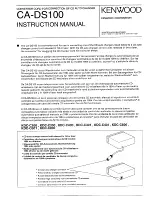
Description varix 200/varix 14 (DECT)
1 - 1
1 Description
1
D e s c r i p t i o n
Introduction
This document describes the integration of DECT into the varix 200/14 digital PABX systems,
and how to install and put into operation a DECT system.
Notes on the structure, design and details on hardware modules and the functions of these
can be found in the system manual named below.
Q
Before installing the varix 200/14 digital PABX systems, please refer to the notes on safety
given in the system manual varix 200/14, Chapter 1 (SNo. 78527.---).
1.1 System description, varix 200/14 with integrated DECT wireless
network
1.1.1 System components
The varix 200/14 product family consists of two digital PABX systems, which differ in their
mechanical construction, their central control hardware and the maximum number of ports
available. The peripheral modules (interfaces) used in the two systems are, to a large extent,
identical. The range of facilities available and operation are the same for both systems within
this product family.
For DECT applications, the appropriate base stations (or Fixed Parts = FP) are connected to
the respective interface boards using 2 x 2-wire cables. Up to four DECT mobile phones (Por-
table Parts = PP) can telephone simultaneously via each base station. The functions available
on the varix M2 portable part are more or less the same as those of the standard digital
system terminal devices with cable connections.
varix 14
(DECT)
This digital PABX system is a compact system and the basic version comprises the following
components:
- 2 S0 trunk line/outside line interfaces
- 2 S0 subscriber line interfaces
- 2 analogue subscriber line interfaces
- 3 slots for peripheral modules (analogue or digital)
- 1 RS 232 port
The number of ports ranges from 10 (basic version) to a maximum of 24.
A total of up to 12 mobile terminal devices can be used with DECT. The absolute maximum
number of terminal devices which can be connected is 24 (cable-bound + DECT).








































